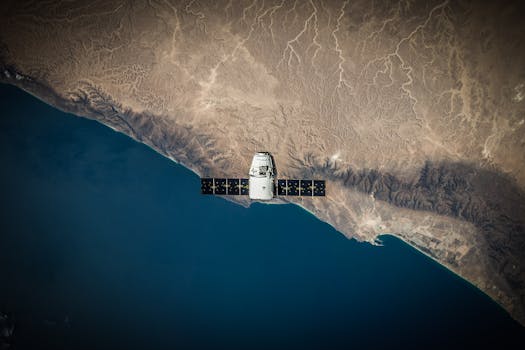
MEO Satellites: Introduction to Medium Earth Orbit Technology – MEO Satellites
MEO satellites, or Medium Earth Orbit satellites, are a type of satellite that operates in an orbit between 2,000 and 36,000 kilometers above the Earth’s surface. This orbit is lower than the Geostationary Orbit (GEO) used by many communications satellites, but higher than the Low Earth Orbit (LEO) used by satellites such as the International Space Station. The unique characteristics of the MEO make it an ideal location for a variety of applications, including navigation, communication, and Earth observation. The MEO has several advantages over other orbits. For one, it allows for faster signal transmission times compared to GEO, which can result in lower latency and better real-time communication. Additionally, the MEO is less congested than the LEO, reducing the risk of interference between satellites. The MEO also offers a wider field of view than the LEO, allowing a single satellite to cover a larger area of the Earth’s surface.
Applications of MEO Satellites
MEO satellites have a wide range of applications, including navigation, communication, and Earth observation. One of the most well-known applications of MEO satellites is the Global Positioning System (GPS), which uses a constellation of satellites in MEO to provide location information and timing signals to receivers on the ground. Other navigation systems, such as the European Union’s Galileo and Russia’s GLONASS, also use MEO satellites. In addition to navigation, MEO satellites are also used for communication. They can provide broadband internet access to remote or underserved areas, as well as support voice and data communication for mobile devices. The O3b satellite constellation, for example, uses MEO satellites to provide high-speed internet access to developing countries. MEO satellites are also used for Earth observation, providing high-resolution images of the Earth’s surface for applications such as weather forecasting, disaster response, and environmental monitoring. The European Space Agency’s SWARM mission, for example, uses a constellation of MEO satellites to study the Earth’s magnetic field and its interactions with the solar wind.
Benefits of MEO Satellites
MEO satellites offer several benefits over other types of satellites. One of the main advantages is their lower latency compared to GEO satellites. This makes them ideal for applications that require real-time communication, such as voice and video conferencing. MEO satellites also have a wider field of view than LEO satellites, allowing them to cover a larger area of the Earth’s surface. Another benefit of MEO satellites is their ability to provide global coverage. By using a constellation of satellites in MEO, it is possible to provide continuous coverage of the entire Earth’s surface. This makes them ideal for applications such as navigation and communication, where global coverage is essential.
Challenges and Future Developments
Despite the benefits of MEO satellites, there are also several challenges associated with their use. One of the main challenges is the high cost of launching and operating a satellite in MEO. This can make it difficult for companies and organizations to justify the cost of using MEO satellites, especially for applications where the cost of using other types of satellites may be lower. Another challenge is the risk of interference between satellites in MEO. As the number of satellites in MEO increases, there is a growing risk of interference between them, which can reduce their effectiveness and increase the risk of errors. Despite these challenges, the use of MEO satellites is expected to continue to grow in the future. Advances in technology are making it possible to build smaller, more efficient satellites that can be launched and operated at a lower cost. This is expected to make MEO satellites more attractive for a wide range of applications, from communication and navigation to Earth observation and scientific research. In conclusion, MEO satellites are a type of satellite that operates in an orbit between 2,000 and 36,000 kilometers above the Earth’s surface. They have several advantages over other orbits, including faster signal transmission times, lower latency, and a wider field of view. MEO satellites have a wide range of applications, including navigation, communication, and Earth observation, and offer several benefits, including global coverage and lower latency. Despite the challenges associated with their use, the use of MEO satellites is expected to continue to grow in the future, driven by advances in technology and the growing demand for global connectivity and communication services.




